A strip of forest runs along the southern border of the garden with tall swamp maples and tulip poplars, but also a wonderful black gum (Nyssa sylvatica) and a sprinkling of oaks to the lower end. The area between the house and the forest is narrow enough at its closest point that I fear one day a towering maple will come crashing through the corner bedroom in a storm. The son who occupied this bedroom long ago moved out on his own, but beware if you’re invited for an overnight stay and thunderstorms are forecast.
Nearest the house the soil is deep, with adequate moisture and shade so that hostas sprout monstrous leaves and azaleas grow with exceptional vigor. But, nearer the forest the shade is deeper, and the soil is thin, choked with thirsty roots from the maples. In this difficult circumstance Robb’s spurge (Euphorbia robbiae, below) flourishes. It has managed to spread where I can barely carve out a hole for the smallest of plants. I suppose that in looser soil its spread might be deemed too vigorous, but here its roaming habit is greatly appreciated.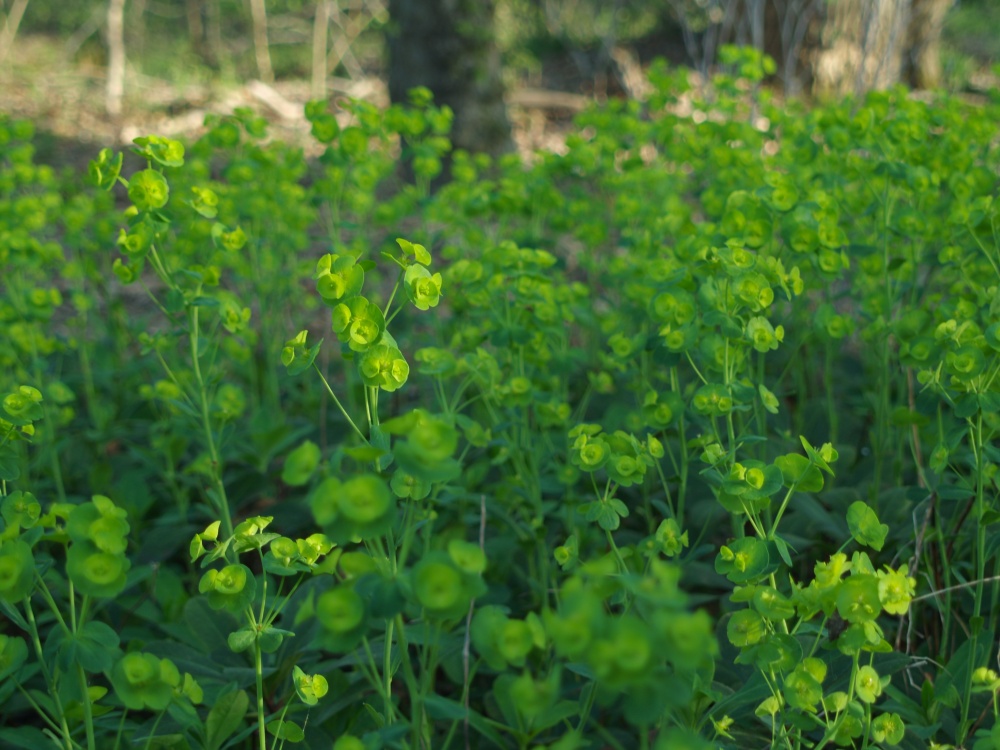
And, Robb’s spurge plays nice with others. It’s a vigorous spreader, but not aggressive. It doesn’t ramble over and through its neighbors, but gently surrounds them. A yellow epimedium and gold leafed hosta have been engulfed for several years in the midst of the spreading spurge, but if I was properly motivated I could go out and dig them up without any trouble.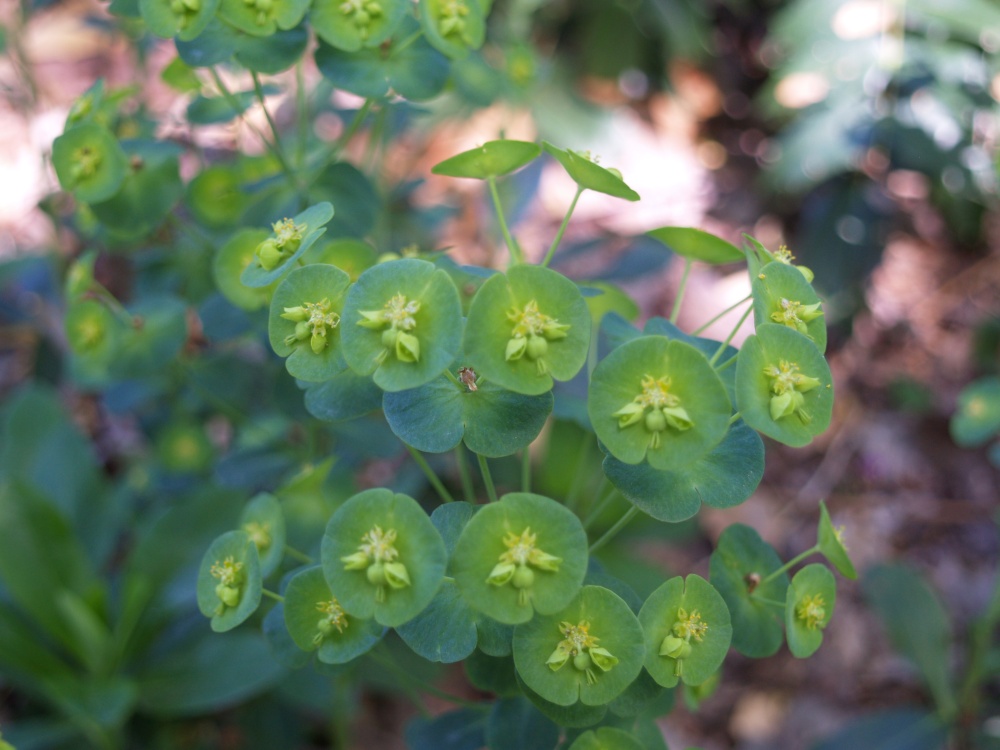
By late winter the evergreen foliage of Robb’s spurge has begun to fade, but then the vibrant chartreuse flowers emerge on tall stems and a sad looking plant suddenly jumps to life. My only hesitation in recommending Robb’s spurge is that it could prove to be too rambunctious in good garden soil, and its eighteen inch height might not be appropriate for some situations. But, I’d bet that there’s no tougher plant. It’s dependably resistant to deer, and it thrives where good sense tells you a plant shouldn’t even survive.
Years ago, I surmised that with the success of Robb’s spurge, all euphorbias would be comparably indestructible, but I’ve been disappointed with red and variegated leafed spurges in sun and shade. The red leafed ‘Chameleon’ (Euphorbia dulcis ‘Chameleon’, above) comes and goes annually, sprouting from seed, but fading due to mildew (I suppose) by late summer. I was excited by it for a few years, but it has proven to be less than stellar. ‘Bonfire’ (Euphorbia polychroma ‘Bonfire’, below) was introduced with the promise that it would be more vigorous and dependable, and indeed it survived through summer without a sweat, only to fail through the first winter. I suspect that it didn’t like the persistent dampness, and there was no sign of it by spring. It will not be invited back for a second trial. 
A few unremarkable spurges have settled in without distinction, but only Robb’s and threadleaf spurge (Euphorbia cyparissias, below) have had notable long term success. I read that many gardeners find this spurge too vigorous (they say invasive), but it grows with short stems so that it will not crawl up or over larger shrubs in its path. Threadleaf spurge has a wonderful texture, and the blooms are every bit as bright as Robb’s for weeks in the spring. 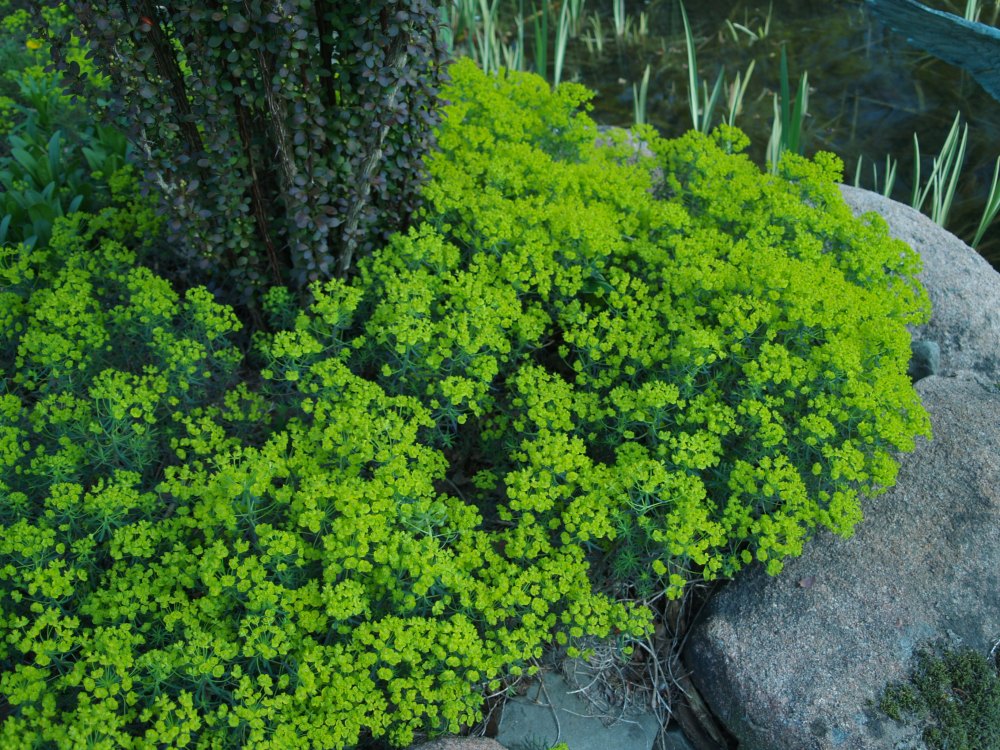
In my garden threadleaf spurge grows alongside a stone patio that borders the large swimming pond, and occasionally it creeps into the gaps between stones. In other parts of the garden moss, creeping Jenny, and bluestar creeper fill gaps between patio and path stones, but threadleaf spurge is just a bit too tall to work here. So, it is easily plucked out, and there’s never a spot where it’s a problem. 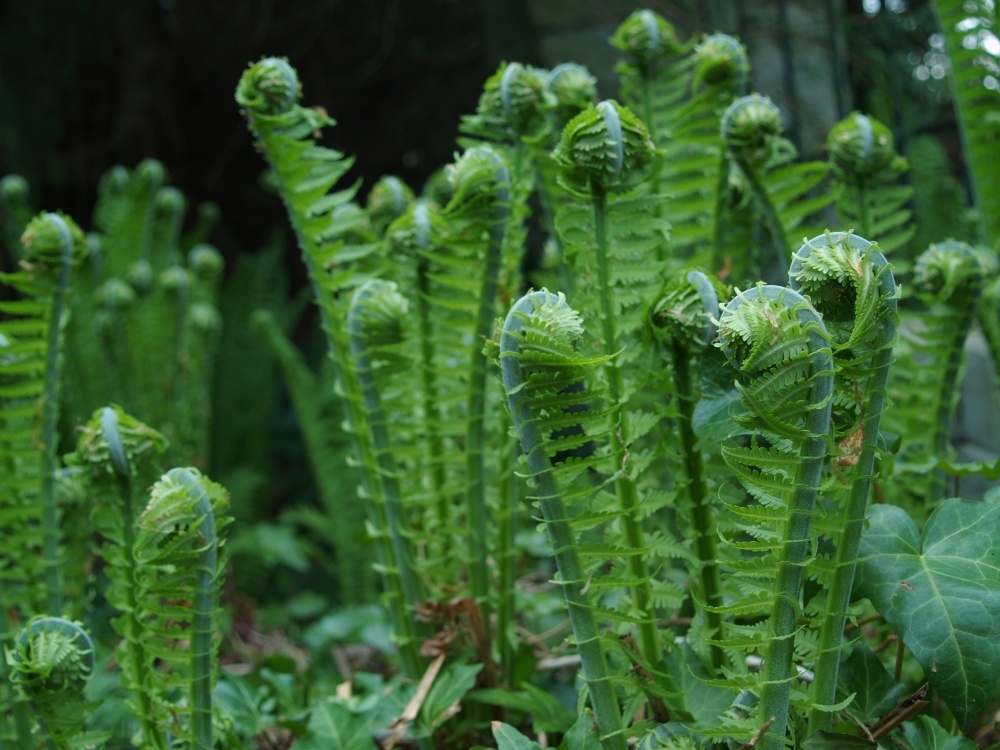
The spurges are not the only tough as nails spreaders in this garden. Delicate looking, but rough and tumble Ostrich ferns (Matteuccia struthiopteris, above) started from transplants I dug out of damp shade where a small spring begins at the forest’s edge. In the wettest parts are skunk cabbages, and on slightly drier ground mayapples and a sturdy clump of Ostrich ferns.
I realized that the space I was transplanting the ferns into was considerably drier, and at midday the sun exposure might be too direct, but the price was right. To my delight, the Ostrich ferns have spread robustly, nixing any plans I could have made to plant a bit more color in this area by the driveway (above). In fact, I prefer the lushness of the ferns, until the Japanese beetles and late summer sun give them some trouble. 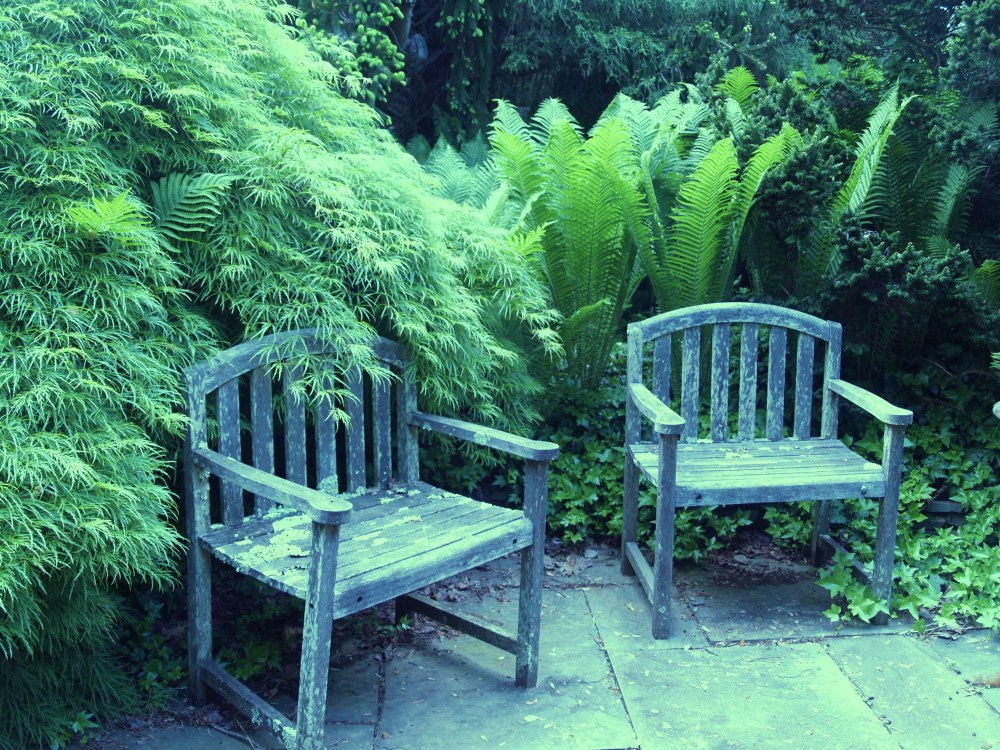
The tall Ostrich ferns spread to cover any area of open ground, and even under the thickly leafed canopy of a wide spreading Japanese maple the fern flourishes. I will often find ferns popping through cracks several feet into the driveway. When strays pop up in the center of the bluestone patio they are readily cut out, and often I’ll transplant these to other dry, shady spots in the garden. Here is a spreader that prefers dampness, but grows without complaint in dry shade.
Great information- I have some dry, shady areas and am always looking for new ideas.